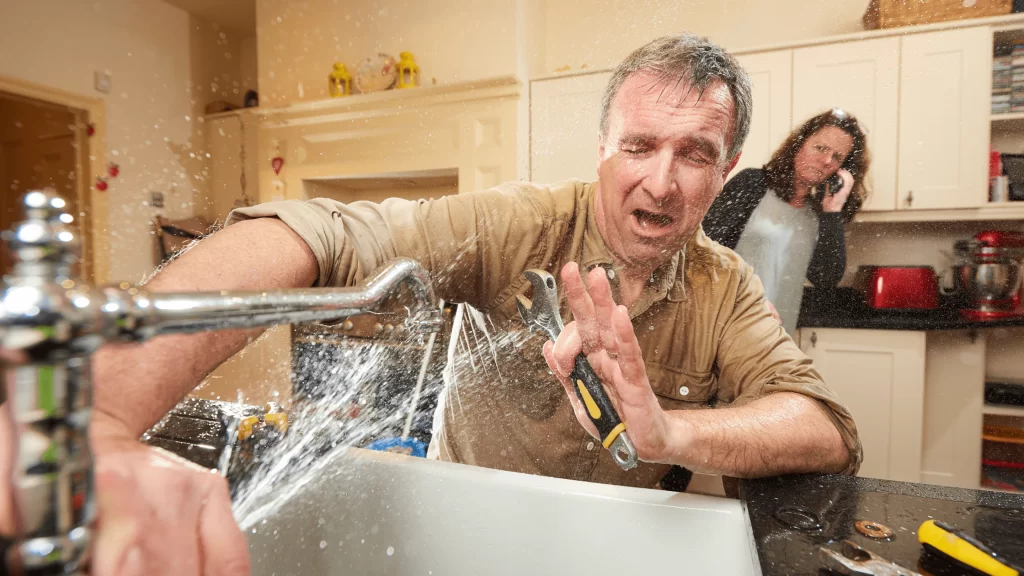How to Fix Common Plumbing Issues Yourself

It’s a fact: everyone experiences plumbing problems from time to time. The good news is that some can be fixed without the help of a plumber.
However, it’s important to know when to call a professional. If your problem goes beyond clearing a drain or taking apart a faucet, read on to learn when it’s best to call a professional!
Dripping Faucets
Dripping faucets are one of the most common and annoying plumbing issues. They can cause water damage to your home and waste money on your utility bill. Fortunately, they’re usually easy to fix. First, turn off the water supply to your faucet. Then remove the handle screw and lift the handle. Replace the O-ring and the washers (remember to coat them with plumber’s grease). You may also need to clean the neoprene seals in the cylinder with distilled white vinegar and a soft scouring pad.
When you’re ready to reassemble, tighten the adjusting ring by turning it clockwise with the spanner tool from your repair kit. Remember to record your removal process or set the parts aside in order so that you can put them back together correctly without introducing new problems. If your DIY fixes don’t work, it may be time to call a professional plumber.
Clogged Drains
One of the most common plumbing issues that homeowners encounter is clogged sinks, tubs, or toilets. The cause of the clog can vary, from hair and other household debris getting stuck in the drain itself to a blockage further up the pipes.
Clogged drains can be a major headache, especially if they’re left untreated for too long. In some cases, a professional plumber may need to use tools like a drain auger or hydro-jetter to remove the blockage from your pipes.
However, there are a few easy ways that you can clear up most clogged drains yourself. For example, you can try pouring baking soda followed by vinegar down the drain, then flushing with hot water. You can also use a wire drain snake (also known as a plumber’s snake) to break up and remove stubborn clogs. Just make sure to follow the manufacturer’s instructions and avoid using caustic chemical drain cleaners, which can damage your pipes over time.
Leaky Pipes
Leaky pipes are a serious issue that can cause costly water damage. They’re often difficult to locate and can lead to a host of problems, like mold growth and structural issues.
Fortunately, you can take steps to repair leaky pipes yourself and minimize the damage until a professional can come out to replace them. First, you’ll want to turn off the water flow to that area of your home by turning off the valve located near the leaking pipe. This will prevent further damage and make it easier to find the location of the leak once you start working on the problem.
Then, drain any water in the area and dry out the leaking pipe section with a towel. Once the section is dry, you can use a pipe clamp (similar to a hose clamp) or epoxy putty to fix the leak and make it watertight again. Make sure you apply a good layer of epoxy to help it hold up longer.
Low Water Pressure
If you’re experiencing low water pressure throughout your entire house, it could be a sign of a problem with the city’s water system. Just like your home’s piping, citywide systems are susceptible to leaks, clogs, and buildup.
The first step in troubleshooting is to check your neighbors’ water pressure to see if they are having the same issue. Next, a water meter reading is typically the best indicator of whether or not you have a leak in your pipes.
If you do have a leak in your pipes, there are a few things you can try to fix the issue yourself. For example, you can use a pipe wrench to tighten the fitting, and you can use a pressure gauge to monitor your water pressure. You can also remove your aerator to see if it’s clogged with rust or mineral build-up and clean it out. If these solutions don’t work, you may need to call a plumber for more extensive plumbing repairs.


